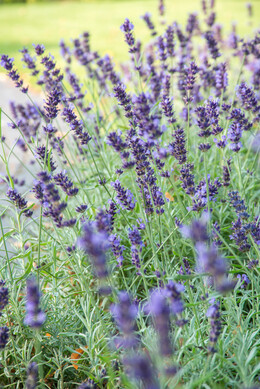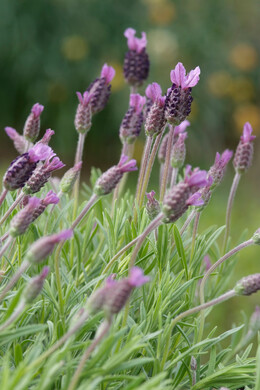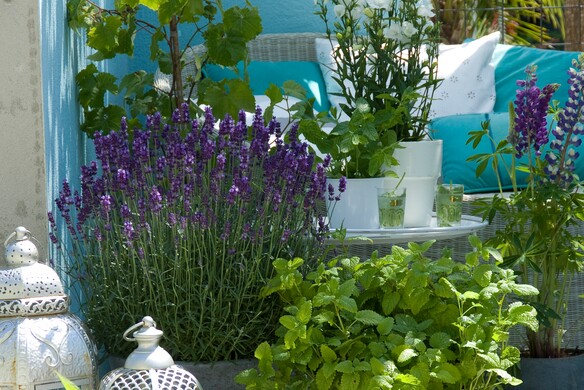Whether your garden is formal or wild, lavender is always a great fit. Positioned in the right spot and looked after properly, lavender plants will stay beautiful for decades!
Lavender varieties
The Latin name for lavender is Lavandula, derived from the Latin verb ‘lavare’ meaning to wash or bathe. The Romans used lavender in washing water because of its wonderful scent. There are more than 45 lavender species and over 450 varieties. The flowers of the classic lavender plant (Lavandula angustifolia) are blue, but there are also varieties with white, pink or purple flowers. In addition to classic lavender (Lavandula angustifolia), there is also topped lavender (Lavandula stoechas). Also known as French lavender, this lavender variety is easily recognised by the tuft on top of the flower spike. Both varieties have the added bonus of being evergreen.
 Mediterranean atmosphere
Mediterranean atmosphere
Lavender is native to the Mediterranean region and can withstand heat and drought quite well. This summer bloomer brings that wonderful Mediterranean atmosphere to the garden. Thanks to its abundant supply of nectar, lavender is a perfect fit for a bee and butterfly garden. It also works really well as a mini hedge! With its edible flowers, you could even put it in your vegetable garden. Lavender also thrives in a pot; just don’t forget to water it.

Tips & tricks
Lavender adores sunshine; the more sun it gets, the more intense the flowering will be! Fertilising is not necessary, but you can sprinkle some lime if necessary. This plant does not like to get its feet too wet. To keep a lavender plant in shape, prune it annually after the harshest frost. The rule of thumb is to cut lavender back to 10-15 cm above the ground, but always leave some leaves above the bare wood. For an even more compact plant, you can also top young shoots after a few weeks. Later in the year, it is time for topiary pruning by cutting off the wilted flower sprigs. You can put dried lavender in scented bags to create a fun gift from your own garden!
Interesting fact
The scent of lavender has a relaxing effect on people. Aphids and wasps, on the other hand, don’t like the scent.
To view lavenders at Crocus click here
You can find more tips and inspiration about perennials at www.perennialpower.eu.
All images copyright iVerde ‘Perennial Power’
If you have enjoyed reading our blog post then why not fill in the form provided to allow us to send you our blog posts and newsletters by email. For all major gardening products, visit our shop from the menu above.

